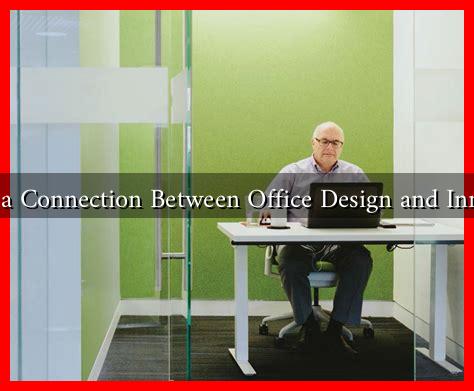-
Table of Contents
Is There a Connection Between Office Design and Innovation?
In today’s fast-paced business environment, innovation is a key driver of success. Companies are constantly seeking ways to foster creativity and collaboration among their employees. One often-overlooked factor that can significantly influence innovation is office design. This article explores the connection between office design and innovation, examining how the physical workspace can impact employee creativity, collaboration, and overall productivity.
The Role of Office Design in Fostering Innovation
Office design encompasses various elements, including layout, furniture, lighting, and color schemes. Each of these components can affect how employees interact with their environment and each other. Research has shown that a well-designed office can lead to increased innovation in several ways:
- Encouraging Collaboration: Open office layouts can facilitate spontaneous interactions among employees, leading to the exchange of ideas and collaborative problem-solving.
- Enhancing Creativity: Creative spaces, such as brainstorming rooms or relaxation areas, can inspire employees to think outside the box.
- Improving Well-being: Natural light, ergonomic furniture, and biophilic design elements can enhance employee well-being, leading to higher levels of engagement and creativity.
Case Studies: Companies Leading the Way
Several companies have successfully integrated innovative office designs that promote creativity and collaboration. Here are a few notable examples:
Google is renowned for its unique office spaces that prioritize employee well-being and creativity. Their campuses feature open spaces, recreational areas, and themed meeting rooms. For instance, the Googleplex in Mountain View, California, includes amenities like nap pods, game rooms, and outdoor spaces that encourage relaxation and informal interactions. This design philosophy has contributed to Google’s reputation as a leader in innovation.
Airbnb
Airbnb’s San Francisco office is designed to reflect the company’s mission of belonging and community. The office features a mix of open spaces and private areas, allowing employees to choose their work environment based on their tasks. The design incorporates local art and cultural elements, fostering a sense of connection and inspiration among employees. This approach has been linked to increased creativity and collaboration within teams.
Statistics Supporting the Connection
Numerous studies have highlighted the impact of office design on innovation and productivity:
- A study by the Gartner Group found that 75% of remote workers reported higher productivity levels when working in well-designed spaces.
- Research from the Harvard Business School indicated that employees in open office environments were 15% more likely to collaborate than those in traditional cubicles.
- A survey by Gensler revealed that 94% of employees believe that a well-designed workspace positively impacts their productivity.
Design Elements That Promote Innovation
To create an office environment that fosters innovation, companies should consider incorporating the following design elements:
- Flexible Workspaces: Provide a variety of workspaces, including collaborative areas, quiet zones, and informal meeting spots.
- Natural Elements: Integrate plants, natural light, and outdoor views to enhance employee well-being and creativity.
- Technology Integration: Equip spaces with the latest technology to facilitate collaboration and streamline workflows.
- Color Psychology: Use colors that stimulate creativity, such as blues and greens, while ensuring that the overall aesthetic aligns with the company culture.
Conclusion: The Future of Office Design and Innovation
The connection between office design and innovation is undeniable. A thoughtfully designed workspace can significantly enhance employee creativity, collaboration, and productivity. As companies continue to adapt to changing work environments, investing in innovative office design will be crucial for fostering a culture of innovation. By prioritizing employee well-being and creating spaces that encourage collaboration, organizations can unlock their full creative potential and drive success in an increasingly competitive landscape.

